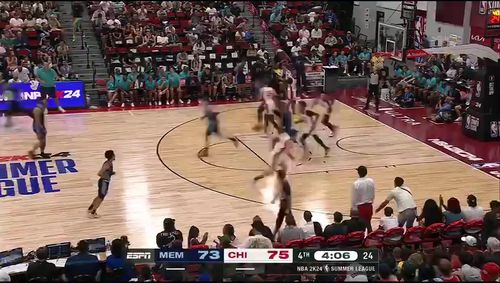The NBA Summer League serves as a platform for rookies, young prospects, and undrafted players to showcase their skills and potential. While the competition may not be as intense as the regular NBA season, the statistics generated during these games can still provide valuable insights into player development and team performance. Let's delve into some key aspects of NBA Summer League statistics:
PPG is a fundamental statistic that measures a player's scoring output per game. It reflects a player's ability to contribute offensively and can indicate their scoring proficiency.
APG measures a player's ability to create scoring opportunities for their teammates. It highlights a player's playmaking skills and court vision.
RPG indicates a player's effectiveness in securing missed shots, both offensively and defensively. It reflects their presence in the paint and ability to control the boards.
FG% calculates the proportion of field goals made out of attempted shots. It provides insights into a player's shooting accuracy and efficiency.
3P% measures the accuracy of a player's threepoint shots. In today's game, threepoint shooting has become increasingly important, making this statistic particularly relevant.
PER is a comprehensive metric that evaluates a player's overall contribution on the court, taking into account various statistical categories. It provides a singlenumber representation of a player's performance efficiency.
The winloss record indicates a team's overall performance in the Summer League. While winning is not the primary objective, as teams often prioritize player development, a positive winloss record can still be indicative of a team's cohesion and competitiveness.
Points differential compares the total points scored by a team with the points conceded. A positive points differential suggests that a team is outscoring its opponents, while a negative one indicates the opposite.
Defensive efficiency measures a team's ability to prevent their opponents from scoring. It takes into account factors such as points allowed per possession and opponent field goal percentage.
Offensive efficiency assesses a team's effectiveness in scoring points. It considers factors like points scored per possession and field goal percentage.
For many rookies, the NBA Summer League represents their first opportunity to compete at the professional level. Observing how they adapt to the faster pace and higher skill level can provide insights into their potential impact during the regular season.
Young players looking to establish themselves or earn a spot on an NBA roster often use the Summer League as a platform to showcase their skills. Evaluating their performance against both peers and more experienced players can help teams assess their longterm potential.

The Summer League is also a stage for undrafted players to prove themselves and earn a chance to join an NBA team. Standout performances can lead to invitations to training camps or even roster spots.
The NBA Summer League offers a glimpse into the future of the league, showcasing the talents of emerging players and providing valuable insights for teams and fans alike. By analyzing statistics and observing player performances, stakeholders can gain a better understanding of player development trends and team dynamics, helping to inform decisions for the upcoming NBA season and beyond.
